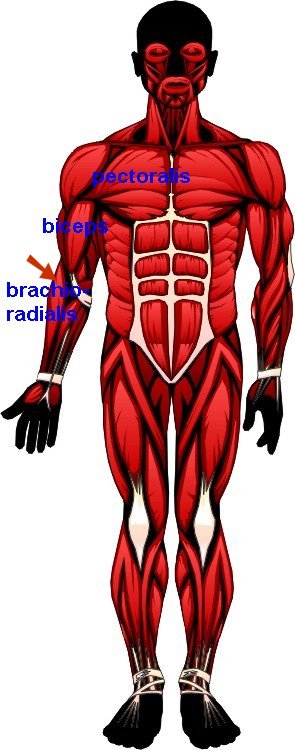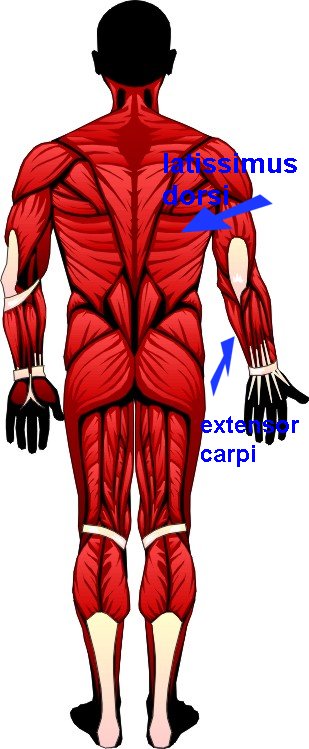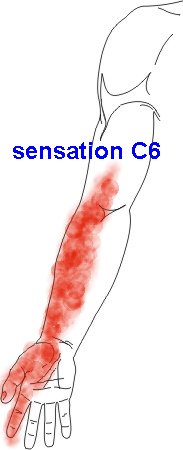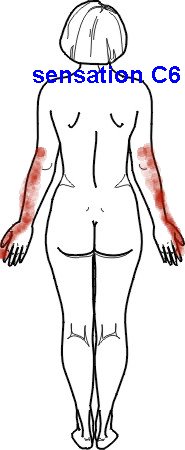SPINAL CORD FUNCTIONING AT C6
What Motor Function is Consistent with C6?
|
|
|
- The nerve root of C6 runs between vertebrae C5 and C6.
- Motor function includes:
- strong bicep muscles (strong elbow flexion)
- weak wrist extension
- tenodesis (ability to passively flex fingers with wrist extension)
- shoulder rotation, adduction and abduction
|
|
|
|
What Sensory Function is Consistent with C6?
|
|
|
- C6 sensation:
- includes thumb side of lower forearm
- thumb (radial nerve)
- first finger (median nerve)
|
|
|
|
Assessment of C6 Motor Function
|
|
|
| Assess and document motor function using motor scale from 0-5.
Shoulder:
- assess ability to rotate shoulder
- assess ability to abduct arm at shoulder (away from body)
- assess abduction against examiner resistance
- assess ability to adduct arm at shoulder (toward body)
- assesss adduction against examiner resistance
Bicep:
- have patient flex or bend elbow
- evaluate the ability to bend the elbow while examiner holds forearm to create resistance
- C6 provides strong bicep
Wrist:
- assess ability to extend wrist
- assess ability to extend wrist against resistance
Digits:
- observe digits during wrist extension; passive digit flexion occurs with C6 during wrist extension
- assess ability to move thumb
|
|
|
| Assessment of C6 Sensory Function |
|
|
- Test one side, then test same spot on opposite side
- Always apply the same amount of pressure to each side
- Ask patient to compare sensation on side A to side B
- Conceal test from the patient and test light touch and then pain separately. Test bilaterally along thumb size of forearm, thumb and first finger
Light touch:
use wisp of cotton or tissue
Sharp or temperture touch:
use safety pin or blunt end needle
pain is a better assessment than temperature for this pathway because patients need to be able to articulate that they can distinguish hot or cold; this is unreliable among intubated patients
|
|
|
| Expected Outcome |
|
|
- feeding and grooming
- able to use assisted devices to grasp objects
- can roll over and maneuver in bed
- may drive car with hand controls
- may be able to transfer ventilation
|
|
|
References
Barr, M, and Kiernan, J. (1993). The Human Nervous System: An Anatomical Viewpoint. Philadelphia: Lippincott. pp 84-85.
Keppler, J. (1987). Acute spinal cord injury. Critical Care Clinics. July. 3:3. pp. 638-641.
Netter, F. (1989). Atlas of Human Anatomy. New Jersey: Novartis.
Waxman, S. (1996). Correlative Neuroanatomy. 23rd Ed. Stamford: Lange. pp 46-52, 352-355, 370.
Brenda Morgan
Clinical Nurse Specialist, CCTC
May 11, 2001. Updated: January 15, 2019






